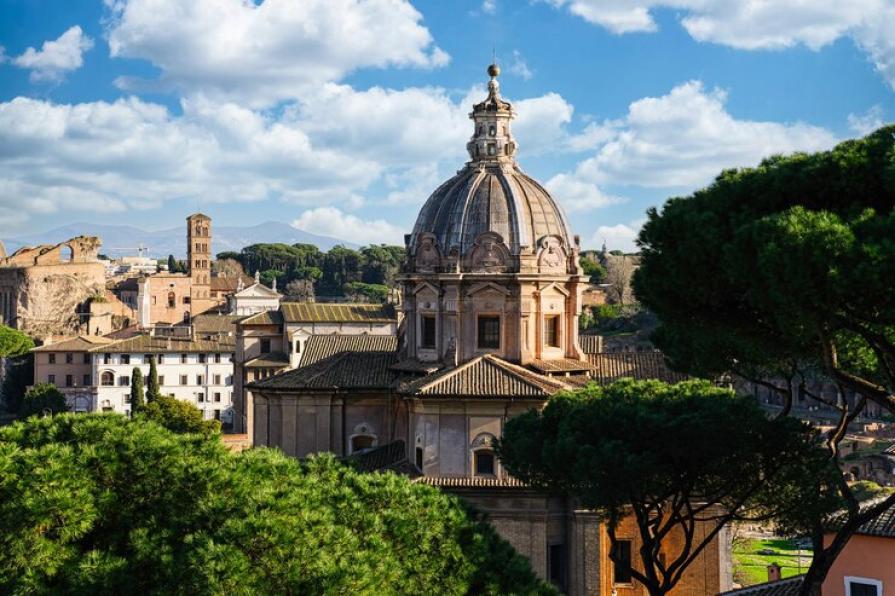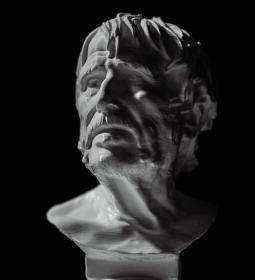The small country of Vatican has an interesting history and many secrets, so it is so interesting to learn all the ins and outs of this religious state!
The Vatican is less than a hundred years old
Although the Vatican City may seem like a very ancient state, it has actually existed for less than a hundred years. The Vatican City was founded on February 11, 1929, as a result of the Lateran Treaties, concluded after a long confrontation between the Papal States and the movement for the unification of Italy in the mid-19th century. These treaties ended the so-called Roman Question, recognizing the right of the new Italian king to administer the territory of Rome and ensuring the Pope's sovereignty over the Vatican.

Unusual name "Vatican"
The word "Vatican" has ancient roots dating back to Etruscan culture. This name is related to the Latin word Vaticanus, which was used to refer to the hill on the right bank of the Tiber River, on which the Etruscan city was located in ancient times. Over time, this name stuck to the territory where the Vatican is located today.
The Holy See is headed by the Pope
This is the central leadership of the Catholic Church, headed by the Pope: he represents the spiritual and administrative power of the church, but the See has no influence on the actions of the Pope as ruler of the Vatican.
The Vatican is a small country
It is the smallest country in the world, covering an area of about 44 hectares, and only 800 people live on its territory.
In second place in the ranking of "crumb states" is Monaco, its area is 208 hectares.
A country within a city
Many small states, such as Monaco, Andorra and San Marino, are completely surrounded by the territory of other countries. However, the Vatican City occupies a special position because it is not just surrounded by another country, but is located entirely inside another city, Rome. Located in the heart of the Italian capital, the Holy See has a unique geographical and political feature making it one of the most interesting states in the world.
Majestic architecture
The Vatican Palace Complex, which includes more than a thousand different rooms, consists of many interconnected buildings: they house museums, conference halls, chapels, living quarters and offices, and the residence of the Pope. In addition, the palaces house many works of art, the length of which reaches 15 km!

There are very few women in the Vatican
Compared to other countries, where half of the population are women, in the Vatican they account for only 5%. Mostly men live here.
There is no official language
Many may assume that Latin, as the language of the Catholic Church, is the official language of the Vatican, but in fact there is no official language here. In official and everyday business, Italian is predominantly spoken, and Swiss-German is the working language for teams in the Swiss Guard.
Citizenship not by birthright
You can only obtain citizenship if you get a job in the Vatican. There are no hospitals in the country, and women have to travel to Rome to give birth, so everyone is born as Italian citizens.
The Vatican has its own football team!
The team of the country FC Guardia is played by the Swiss Guards. In total, there are eight teams in the Vatican, which consist not of professional athletes, but of employees of various institutions.
The most criminal country in the world
Most likely, this is due to the small population, but according to statistics, the state is on the first lines in terms of crime! It's all about tourists who are robbed on the streets of the Vatican and in stores, while serious crimes are quite rare here.
Tombs in St. Peter's Basilica
The Vatican is home to more than 100 tombs, 91 of which belong to former popes, including the recently deceased John Paul II.

The Swiss Guard defends the country
To serve in the Guards, you must be a Swiss Catholic prepared in the Swiss Armed Forces. The Swiss Guard, formed in 1509, is the oldest military unit in the world that is still in operation today!
The Pope is elected
He is elected by the College of Cardinals, while in other countries where there is a monarchy, power is inherited.
The oldest pharmacy
Residents of the country and visitors shop in the "Vatican Pharmacy" because it is much cheaper than pharmacies in Italy! Founded in the XVII, the pharmacy is the busiest in the world, serving almost 2000 customers daily.
An interesting fact: you will not find contraceptives there.
ATM in Latin alphabet
Terminals from the official Vatican bank still have instructions in Latin. It is interesting if anyone understands what is written there? And how were bank instructions translated into the dead language of the distant past?
Euro in the Vatican
They have banknotes and coins with images of Popes that they make at their mint - collectors from all over the world want this money in their collection. The Vatican lira was the predecessor of the euro and was phased out in 1999.
Short Railway
Its length is 300 meters, you can't really enjoy the trip, more often freight trains run there. But it is recognized as the shortest railway in the world!

The Vatican is not all in the Vatican
In accordance with the Lateran Treaties of 1929, the Basilica of St. John Lateran, whose official name is the "Archbasilica of the Most Holy Savior and of Saints John the Baptist and John the Evangelist in the Lateran", is considered part of the territory of the Vatican. Although this important church is located at a distance of 4 km from the borders of a small state, it does not formally belong to Italy and is under the administration of the Pope.
Ancient obelisk on the main square
The obelisk was originally erected in Ancient Egypt during the reign of Pharaoh Amenemhet II, later it was transported to Rome by order of Emperor Caligula in 37 AD and installed at the Circus of Nero, and only in 1586 Pope Sixtus V ordered the obelisk to be moved to its current location in the center of St. Peter's Square. It is a symbol of eternity and connection with ancient civilizations. A bronze cross containing relics of the Holy Cross was placed on top of the obelisk, emphasizing its Christian significance.
St. Peter was crucified on Vatican Hill
St. Peter, one of the apostles of Jesus Christ and the first bishop of Rome, according to church tradition, was arrested and sentenced to crucifixion. Peter asked to be crucified upside down, as he did not consider himself worthy to die in the same way as Jesus Christ. The site of his crucifixion is believed to be on Vatican Hill, in the area of the ancient Circus of Nero, next to where St. Peter's Basilica is now located.
The Pope has an American telescope
The Vatican Observatory is one of the oldest astronomical research institutions in the world, which was founded in 1582 at the initiative of Pope Gregory XIII to reform the calendar. In 1981, a new division in Arizona was founded to provide better conditions for astronomical observations, and in 1993, in conjunction with the University of Arizona, the state-of-the-art Vatican Advanced Technology Telescope was built.
The Vatican is a UNESCO World Heritage Site
The Vatican is the only sovereign state that is fully included in this list! It was included there in 1984. This city-state was honored for a reason – it is due to its enormous cultural, historical and spiritual significance. The Vatican City is the center of the Catholic Church and the seat of the Pope, with dozens of outstanding monuments: St. Peter's Basilica, the Sistine Chapel and the Vatican Museums, which house a huge number of works of art and cultural treasures.
A record amount of wine is drunk in the Vatican
Again, this is due to the fact that few people live in the Vatican, and many people drink wine here, including during religious ceremonies and holidays.

The Pope did not always live in the Vatican
Initially, the Pope did not live in various residences in Rome. In the early centuries of Christianity, popes used their homes and church buildings to live and conduct business. The popes also lived in France during the Avignon captivity from 1309 to 1377 (by the way, several palaces and administrative buildings were built for the papal court during this period). Only in the XV century was the papal residence finally transferred to the Vatican. Vatican Hill became the site of the construction of new palaces and administrative buildings, including the Apostolic Palace.
You can see the Pope on Wednesday
Every week, the Pope comes to St. Peter's Square to give a speech to the residents and bless them. Anyone can attend this event – just register online, get a free ticket and arrive early. And on Sunday at noon, the Pope addresses the visitors from the window of his residence.
False St. Peter's Basilica
The cathedral is lower in rank than the basilica, which is St. Peter's Basilica. It is one of the most majestic and significant churches in the world, but it is not the cathedral of Rome - the official one is the Archbasilica of St. John Lateran, where the see of the Pope as Bishop of Rome is located.
The Pope serves as Bishop of Rome
He has many titles, including "Supreme Pontiff", "Primate of Italy", "Archbishop and Metropolitan of the Roman Province", but one of the key titles is "Bishop of Rome". As a bishop, the Pope is considered the spiritual leader of the Diocese of Rome, the most important diocese in the Catholic Church.
Unique flag of the Vatican
The Vatican flag consists of two vertical stripes of equal width: the left stripe is yellow, the right is white. These colors are traditionally associated with the Vatican and symbolize the gold and silver keys of St. Peter. In the center of the white stripe are the keys of St. Peter and the papal tiara; two keys, one gold and one silver, are bound together and tied with red lacing. The keys symbolize the authority given to St. Peter and his successors (Popes) by Jesus Christ: the gold key symbolizes spiritual authority, and the silver key symbolizes temporal authority. Above the keys is a papal tiara that symbolizes papal authority and his role as the spiritual leader of the Catholic Church.

The modern design of the Vatican flag was adopted on June 7, 1929, shortly after the conclusion of the Lateran Treaties, which created the sovereign state of Vatican City.
Souvenirs and stamps are the Vatican's main sources of income
Vatican postage stamps are popular among collectors, so their sale brings significant income. The Vatican also sells a variety of souvenirs, including medals, coins, and other commemorative items that attract tourists and pilgrims.
Own mail
The Vatican Postal Service was founded on February 11, 1929, and commemorative postcards and letters can still be sent from the post office.
Vatican Media
The Vatican has its own media and Internet resources: the newspaper L'Osservatore Romano, the top-level domain .va and the Vatican Radio station. On the radio and in the newspapers, they tell news from the life of this baby country.
Carbon neutral country
In 2007, the Vatican announced its intention to become the world's first carbon-neutral country, a decision that was announced in the context of efforts to deal wth climate change and improve environmental sustainability. The Vatican continues to actively work on the introduction of green energy sources and is trying to become as environmentally friendly as possible.














